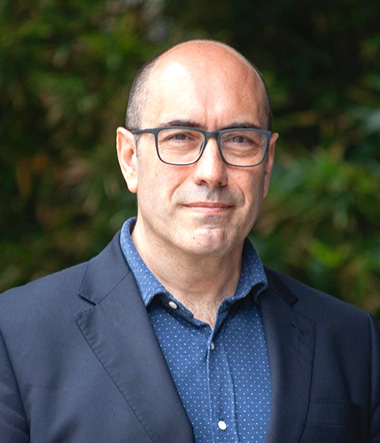Theory and Simulation
Group Leader: Pablo Ordejón
Main Research Lines
Development of theoretical methods, numerical algorithms and simulation tools for atomic-scale simulations: towards massive HPC facilities
Computational tools: SIESTA development and its connection with other codes and computational infrastructures like AiiDA
First-principles simulations at the nanoscale
Physical properties and chemical processes in materials
The Theory and Simulation group has continued focusing much of its efforts on three flagship H2020 projects:
MaX (Materials design at the eXascale - www.max-centre.eu), one of the eight European Centres of Excellence in high-performance computing (HPC) Applications supported by the EU under its H2020 e-infrastructure funding programme. MaX supports developers and end users of advanced applications for materials simulations, design and discovery, and works at the frontiers of current and future HPC technologies. It brings together leading developers and users of materials applications, together with top experts in HPC. After a first period of three years (2015-2018), the grant was renewed for the 2018-2021 term, with an increased budget and the incorporation of new groups and codes to the team.
Work during this year has been concentrated in adapting SIESTA for its execution in GPU-accelerated architectures. These will be the building blocks of the coming European pre-Exascale supercomputers financed by the European High-Performance Computing Joint Undertaking (EuroHPC JU), which are currently being commissioned in three HPC centers (BSC in Spain, CINECA in Italy and CSC in Finland).
INTERSECT (www.intersect-project.eu), a project focused on integrating materials simulation codes into an industry-class package for the design of electronic devices. The resulting IM2D framework —an interoperable material-to-device simulation platform— will integrate some of the most used open-source materials modelling codes (Quantum ESPRESSO and SIESTA) with models and modelling software for emerging devices (GinestraTM), via the SimPhony infrastructure for semantic interoperability and ontologies, powered by the AiiDA workflow engine, and its data-on-demand capabilities and apps interface.
NFFAEurope (www.nffa.eu), a project funded under the H2020-INFRAIA-2014-2015 call “Integrating and opening existing national and regional research infrastructures of European interest”. The NFFA (Nanoscience Foundries and Fine Analysis) is a platform for interdisciplinary research at the nanoscale, in which our group participates as an “installation” offering computational support for experimental users’ projects. During 2020, a new proposal submitted to continue the activities of NFFA for a new 5-year period was approved by the EC, and therefore the group will continue providing services to transnational users during the next years.
Besides, we continue with our work within the project financed by the Spanish Ministry (PGC2018-096955-B-C43), entitled “SIESTA and its interoperability for new challenges in atomistic simulations”, and have joined two other national projects led by experimental groups of ICN2, to provide theoretical support: project “SURFER: Química Física de Superficies Ferroelectricas” (PI: Neus Domingo, ref. PID2019-109931GB-I00), and Project “STEAMY: STeering hEAt flow in layered Material sYstems” (PI: Klaas Tielrooij, ref. PID2019-111673GB-I00).
Group Leader

Pablo Ordejón
CSIC Research Professor, Group Leader and Director
pablo.ordejon@icn2.cat
Prof. Pablo Ordejón earned his degree in physics (1987) and his PhD in science (1992) at the Universidad Autónoma de Madrid. He worked as a postdoctoral researcher at the University of Illinois at Urbana-Champaign (USA) from 1992 to 1995 and as assistant professor at the Universidad de Oviedo from 1995 to 1999. In 1999, he obtained a research staff position at the Institut de Ciència de Materials de Barcelona of the Consejo Superior de Investigaciones Científicas (CSIC). In 2007 he moved to the former CIN2 (now ICN2) as the leader of the Theory and Simulation Group, where he is currently a CSIC Research Professor. Since July 2012 he has served as Director of the ICN2.
He has published more than 225 scientific articles, which have received over 34,000 citations (h-index of 63). He was co- editor of EPL (formerly Euro Physics Letters) from 2010 to 2015, and is member of the Editorial Boards of the Physica Status Solidi journals since 2004 and Nanomaterials since 2018.
He oversaw the Condensed Matter Physics subject area of the Physics Panel of the Spanish National Evaluation and Foresight Agency (ANEP) from 2003 to 2006, and was the head of the Physics and Engineering Panel of the Access Committee to the Spanish Supercomputing Network from 2005 to 2011. He became a fellow of the American Physical Society in 2005, and received the Narcís Monturiol medal from the Catalan Government in 2018.
His research is focused on the development of efficient methods for electronic structure calculations in large and complex systems, with contributions to the development of techniques for large-scale atomistic simulations based on first-principles methods such as SIESTA. He has also been involved in the study of the fundamental properties of materials at the atomistic level. His current interests include electronic transport in nanoscale devices and electronic processes at surfaces and 2D materials, among many others. He maintains frequent collaborations with industrial laboratories on the simulation of material processes at the atomic level. He is a co-founder of the spinoff company SIMUNE.

